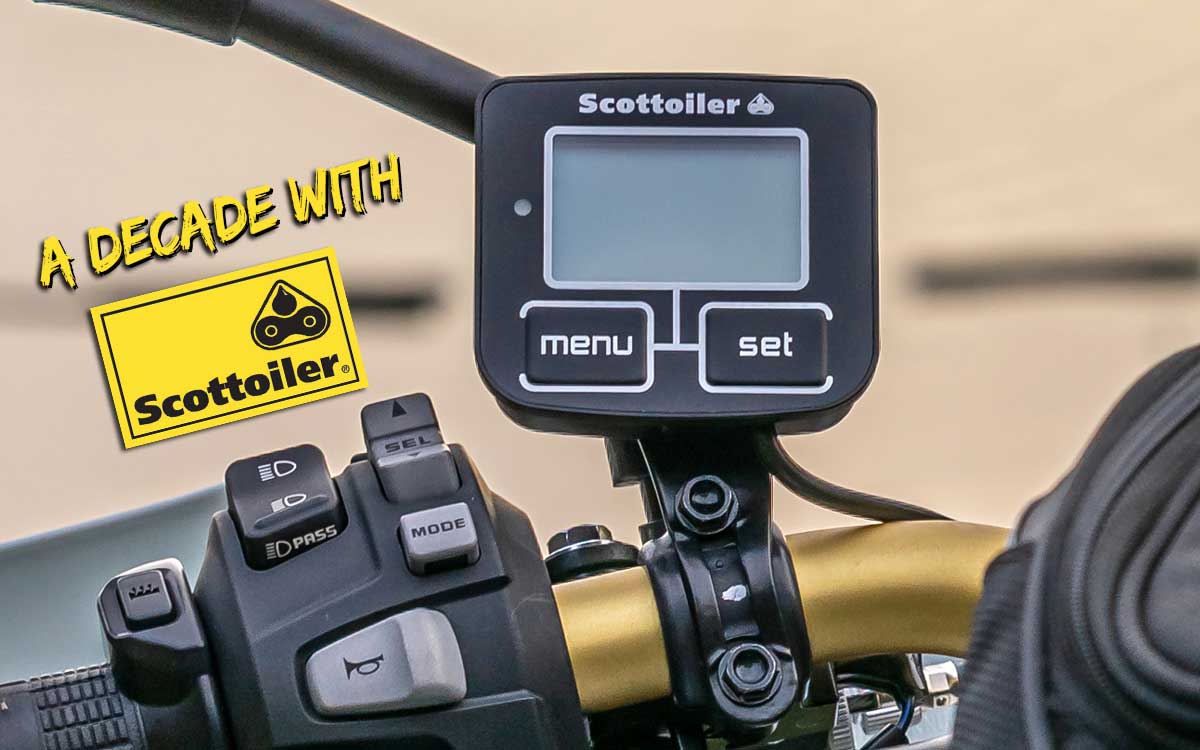Hi Stuart,
Interesting theory of Scottoilers' operation - especially the intake/exhaust cleansing aspect you describe.
I had a quick look around the web for Scottoilers reviews/info. It was fairly instructive.
One source claimed they worked great on dusty gravel roads, but otherwise there seems to be a broad concensus that Scottoilers do not perform well "off-road", i.e. off pavement.
For road riding there's pretty much universal praise, although reliability can sometimes be an issue apparently.
But if i had to turn off my chain oiler each time i got on a gravel road, as suggested by most sources, that would pretty much be a deal breaker.
Additional complexity and reliance issues of a vacuum/electric system would be negatives for me, although if it worked for my applications i'd consider it for sure. What's not to like about minimal chain maintenance requirements?
Regarding the self-cleaning effect you described Stuart - that description appeared in one source (see below), but from what i read, increased cleanliness of the chain is mostly a result of the absence of copious amounts of "sticky" lubricants - which pretty well describes my bar-oil routine. Perhaps that's the reason there's so much grit in my chains - there certainly is a logic to that.
I did notice that all the installations described in the reviews have the oil dispenser attached on one side of the chain, not down the middle. I wonder if the ones i looked at are unlike Stuart's.
===========================
From "A Decade with Scottoiler"
A Decade with Scottoiler: How much is convenience worth to you? I pondered that question more than a decade ago when prepping for a six-month road trip aro

adventuremotorcycle.com
"I still check chain adjustment and such, but consistent and automatic chain lubing seems to keep the chain from falling out of adjustment. And I love the Scottoiler for that reason, it makes long rides easier. However, I am very much aware that an oily chain and off-road dust do not mix well, creating an abrasive paste. The saving grace is you can turn the system off well before arriving at a dirt destination."
"Prolonged chain life (when turned off during dirt sorties)"
==========================
From: "Tested: Scottoiler xSystem automatic chain oiler review"
£199.95 | BikeSocial tests the new easy-to-fit electronic motorcycle lubrication device
www.bennetts.co.uk
"Oil is fed to one side of the chain, but it finds its way onto both O-rings"
"Depending on how you set the flow rate, you’ll get around 1,000 to 1,500miles between fills, so the 250ml bottle, which costs just £5.48 to replace, will last between 4,000 and 6,250miles – a good year for the average rider."
“I have the standard single-tip dispenser and am amazed at how clean it keeps everything, even on dusty gravel roads."
==========================
From: Scottoiler V-system—An Auto-oiler Overview
That said, I held off on getting a V-system Scottoiler. I’m frugal, so I didn’t put one on the bike I used for the first half of our trip—a G 650 GS.
expeditionportal.com
"Scottoiler oil isn’t sticky, so it flushes away dirt instead of attracting it"
"In my opinion, auto-oilers may be worth it, provided they work properly. If you’re riding long distances and/or you ride a lot of tarmac, even better. Consistent dirt roads may prove to be too much for the oilers to keep up, which is why many off-roaders stick to the tried-and-true grunge brush and cheap gear oil method."
"Some complaints and observations indicate that an auto-oiler is not ideal off pavement (Suggestions are to either turn the oiler off and manually clean and lube, or turn it up for extra drips. Dave’s experience proves they work fine on dual-sports.)"
==========================
Cheers!








